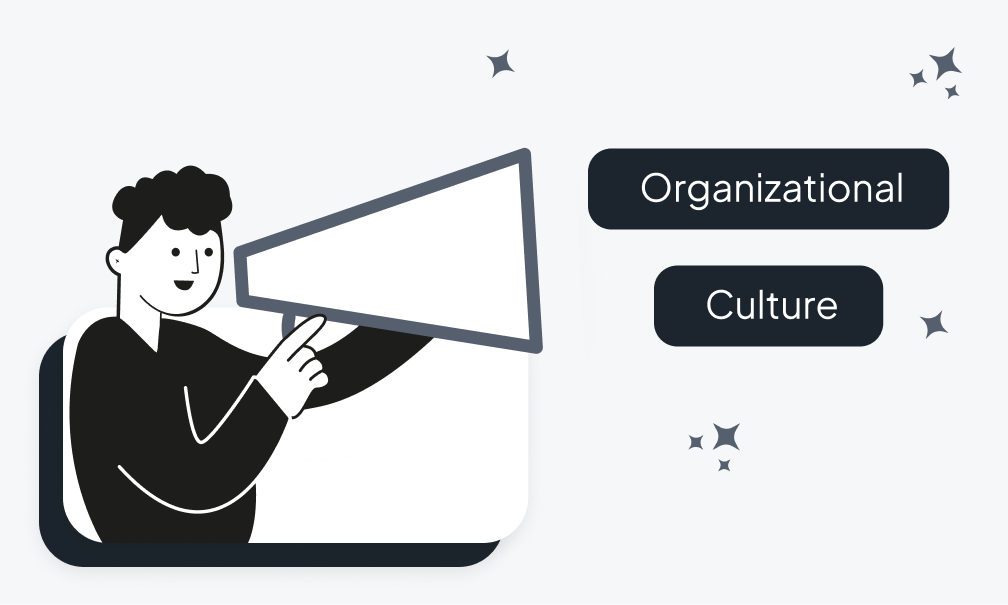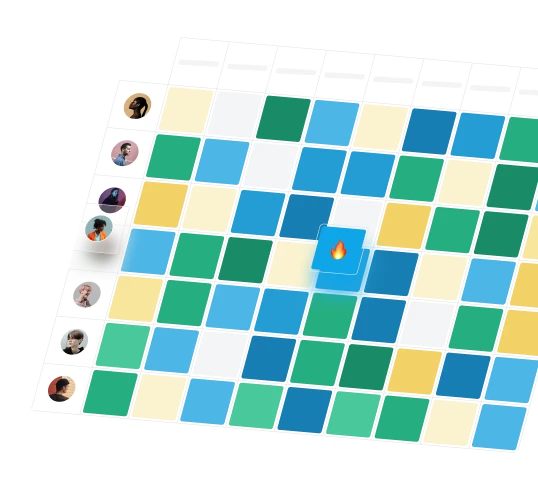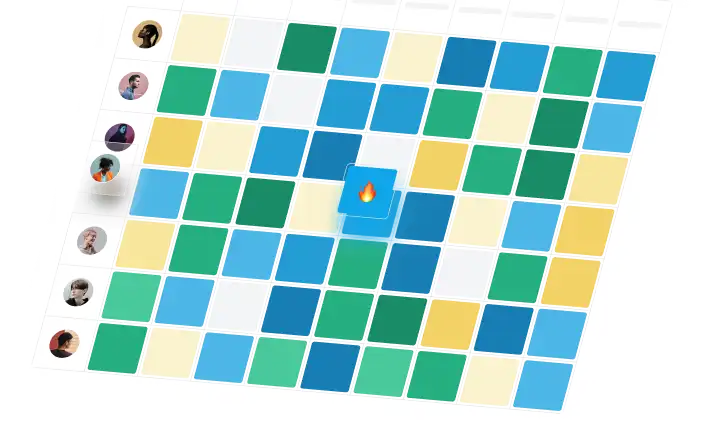
Organizational Culture Defined: Exploring the Soul of the Workplace!


- What Does Workplace Culture Mean?
- What Makes a Company Culture: The Elements.
- Why Is Organizational Culture Important?
- The Common Types of Company Culture
- How To Build a Positive Workplace Culture?
- Real-Life Workplace Culture Examples
- How Does agyleOS Define Company Culture?
- To Sum Up
Workplace culture is fundamentally the shared set of values, beliefs, and principles of an organization’s workforce.
Each company is bound to develop its culture over time, whether intentionally or not!
Workplace culture significantly influences an organization’s environment, the employee experience, the peer interaction, and finally, the overall success.
In this article, we will explain company culture, explore common types of company culture, and discuss what makes a good company culture.
Bear with us to analyze some real-life examples as well as some actionable advice for your next organizational culture step.
Our organizational culture platform fosters innovation, collaboration, and a healthy workplace in your company.
What Does Workplace Culture Mean?

Work culture is the collective values, norms, and attitudes of every individual within an organization.
It encompasses employee interactions, behavioral patterns, and various attitudes toward work.
You can think of workplace culture as the “personality” of a company since it is the basis of the overall health and success of each organization.
A healthy organizational culture prioritizes the employees’ well-being and aligns their skills and attitudes with their responsibilities and the company’s goals.
Visualize and Manage the Skills within your organization for a positive organizational culture and development.
What Makes a Company Culture: The Elements.

As we highlighted earlier, workplace culture includes values, beliefs, etc.
Now, however, we need to discuss what contributes to building a work culture and a healthy one!
1. Accountability:
The mere sense of being accountable encourages your team to be more responsible, learn from their mistakes, and feel empowered to take control of various tasks and go the extra mile.
And even take responsibility for their learning path and updating their knowledge.
2. Equity and Fairness:
Equal treatment for all employees promotes diversity, inclusion, and opportunities.
A fair workplace culture builds trust and loyalty.
3. Open Communication:
Having a dynamic feedback platform through smart employee survey systems, expression of ideas, and transparent collaborations will enhance effective teamwork.
4. Recognition and Appreciation:

Acknowledging your team’s good work and creating an environment for peer appreciation boost morale and motivation.
The Kudo wall platform is our innovative approach to enhancing organizational culture.
We designed this feature specifically for organizations to incorporate regular recognition and a positive atmosphere within their workplace culture.
5. Professional Growth:
Providing development opportunities with continuous learning for your workforce can enhance the employee experience, as well as increase organizational success.
Cultivating a safe and healthy organizational culture that encourages employees to confidently and honestly share their skills will ease the process of locating skills and identifying skill gaps.
6. Work-Life Balance:
Statistically, employees who feel satisfied with their work-life balance are more motivated and productive.
You can utilize surveys and interviews, such as eNPS, to learn more about your employees’ well-being.
You can also read our article on “What is eNPS?” to incorporate this survey correctly as a component of your company culture.
7. Trustworthy Environment:
A trustful environment is a critical pillar of a sustainable organizational culture.
It makes employees feel safe to express ideas, take risks, and be vulnerable without fear of negative consequences.
This atmosphere fosters open communication, collaboration, and mutual respect, leading to increased engagement and productivity.
It is built on principles of integrity, transparency, and consistent support from leadership.
Why Is Organizational Culture Important?

Company culture inevitably influences every aspect of your organization.
But what areas can be affected or improved by the company culture?
1. Employee Retention:
It is evident that a positive culture at the workplace results in more employees staying for a long time.
Moreover, with more experts in a team, you are more likely to successfully design a successful mentorship program or training for new hires.
2. Employee Engagement:
A healthy corporate culture enhances engagement, participation, and dedication.
According to a 2024 data analysis by Moneyzine, a staggering 89% of highly engaged employees claim the culture in their organization is positive, which suggests how a positive culture holds power to influence your team.
3. Successful Recruitment:
Top candidates and prospective talents always consider an organization’s culture before applying.
A positive workplace culture attracts new and skilled employees.
Moreover, your workplace culture affects everything from employee experience to career growth.
Evidently, the company culture is one of the leads in enhancing productivity and satisfying customer service since engaged and happy employees are more likely to deliver quality work and do their best for your organization.
An efficient people and culture platform enables you to boost employee engagement and increases profitability based on skills and competencies.
The Common Types of Company Culture

According to business professors Robert E. Quinn and Kim Cameron, there are 4 major and common types of company cultures.
Each of these cultures inherits specific advantages and disadvantages that make them suitable for various kinds of organizations.
1. Clan Culture:
As the name suggests, this type views the organization as a family and focuses on collaboration.
Clan culture emphasizes teamwork, participation, and consensus.
Pros: This culture boosts collaboration and teamwork, fosters loyalty and commitment, and reduces workplace friction.
Cons: Clan culture is usually resistant to change, and it is behind the market demands. This culture might also lack accountability due to its more informal structure.
2. Adhocracy Culture:
This culture promotes innovation and creative thinking.
Adhocracy culture nurtures employees who are willing to take risks and think outside the box.
Pros: Obviously, the pros of this culture include high innovation, critical thinking, and adaptability.
Adhocracy culture suits ever-changing companies in need of constant innovation.
Cons: Due to constant changes in trends, this culture falls short of consistency and long-term planning.
This factor also creates confusion for employees since there is no definite guideline.
3. Hierarchy Culture:
As the name claims, this culture is designed to provide clear lines of authority.
Hierarchy culture is formal, somewhat strict, and demands that decision-making take place in specific chains of command.
Pros: This culture promotes clear structure and stability as well as efficiency for stable industries and routine jobs.
Cons: Respectively, Hierarchy culture tends to be rigid and inflexible, which is not great for changes in major trends. This factor might also reduce creative thinking and innovation in employees.
Each culture type has its specific values and drawbacks.
It’s essential that you choose a culture type that is compatible with your organization’s needs and complements your goals and organizational targets.
4. Market Culture:
An old-school competitive culture!
Market culture demands results and focuses on achieving measurable organizational goals and targets.
Pros: Due to the tough competition, this culture usually brings out solid performance and clear goals.
Cons: The work environment in this culture tends to be intense. This culture might even lead to sacrificing the well-being of the workforce and ignoring their work-life balance.
How To Build a Positive Workplace Culture?

As we have clearly outlined the importance of organizational culture, it’s time to review some tips for you to improve your work culture.
1. Establish your core values and organizational goals.
Define the constitutional values of your organization and ensure that these values exist in every aspect of your company.
Moreover, create a vivid vision of your company’s goals so that each employee is familiar with what your organization stands for.
2. Encourage open communication and transparency.
Create a safe space for your workforce to share and discuss their feelings and feedback.
You can benefit from building focus groups and other activities to enhance trust and cooperation.
3. Acknowledge the good work.
Recognize and reward your employees for their contribution to your company.
You can use The Kudo Wall platform to foster a friendly cheering space for your workforce, including your remote employees.
4. Be more flexible and inclusive.
Adapt more to your employees’ needs and provide them with flexible work hours as well as opportunities for a healthy work-life balance.
Moreover, be inclusive and appreciate diversity to make everyone feel like they belong to your company.
5. Incorporate Fun!
The old-fashioned ideas of tennis tables and vending machines to newer ones such as video games and meditation rooms are basic and practical approaches to implementing some fun into your work environment.
6. Invest in professional development:
Try to provide growth opportunities for your workforce so they can learn new skills and advance in their careers.
You can use mentorship programs, training, and other tools to do some upskilling in your organization.
Professional development opportunities appear when you start finding the strong and weak areas of each person or team.
Performing a skills analysis allows you to have a holistic view of your workforce’s abilities.
A skills matrix software allows you to have a thorough and organized understanding of your organization.
7. Be a Role Model!
Management must embody the corporate culture they want to implement in their organization.
As a leader, you must be accessible and show the attitude you expect to receive from your team.
Remember that your organizational culture is a living entity that can potentially inspire your team and boost success.
By improving the workplace culture, you can increase retention rate, productivity, and employee engagement.
Real-Life Workplace Culture Examples

Several companies are known for their exceptional company culture.
Further, we will review some of these organizations and their work culture policy to have a better grip on the matter.
1. Pixar:
Yes! Pixar's animation studio is highly celebrated for its creative and collaborative culture.
The company’s co-founder, Edwin Catmull, created a fostering program for innovation and dynamic feedback: The Ugly Babies!
The “ugly babies”, as Catmull called them, are the fresh ideas that are meant to be nurtured into successful projects later on.
Pixar celebrates exceptional creations, collaboration among peers, and healthy competition for ideas to enhance employee engagement and productivity.
In the following video, Edwin Catmull explains his creative invention more thoroughly.
2. Netflix:
Netflix’s employee-oriented culture enhances responsibility as well as freedom of choice.
They have developed a company culture in which they promote independence with accountability to take control of various tasks, which has resulted in high performance and engagement.
Netflix’s culture memo states that people are prior to processes.
It emphasizes that the work culture gives employees the authority to make choices.
Even though managers are available for advisory purposes, they must not alter their team member’s decisions.
3. HubSpot:
HubSpot is long known for its inbound culture, which promotes transparency, autonomy, and a flat hierarchy to empower employees to make decisions for organizational growth.
HubSpot is famous for its company culture since it constituted HubSpot’s Culture Code and other cultural manners.
The only difference is that the program is for the employees rather than customers.
This program is known to be treating the company culture as a product and the employees as the users.
4. Airbnb:
As they strive to create a world where anyone can belong anywhere, they have started with their workplace.
Airbnb emphasizes transparency: all employees must be informed about the organization’s affairs.
This company particularly insists that everyone rely on the inside news rather than the outside rumors.
Following this principle, Airbnb has managed to provide executive meeting briefings for its employees within 24 hours after an event.
Airbnb’s culture is fundamentally built on a sense of belonging.
5. Atlassian:
As a pioneering software organization, Atlassian promotes an open company culture with the motto: No Bullshit!
This might sound blunt at first, but the core value states that the company is a place of transparency where every opinion is valued and collaboration is emphasized.
Atlassian highlights that “Behind every great human achievement, there is a team.”, indicating that success is the result of teamwork.
These organizations have powerfully demonstrated that a healthy and positive work culture can not only benefit the employee experience but also increase business success.
How Does agyleOS Define Company Culture?

Our platform organizational culture provides an immersive experience for skills-based organizations.
You can utilize our various services, such as our skills matrix tool, the employee survey system, interactive org charts, etc., to build a healthy and productive workplace!
According to the rapid changes in the business industry, having a reliable and supportive company culture is one of the significant factors in future-proofing your organization.
To Sum Up
Workplace culture has become more than just a buzzword. A positive work environment has proven to engage and satisfy more employees, resulting in higher productivity and profitability.
We discussed the elements of various work cultures, the common types of company culture, and what makes a good company culture with the help of real-life examples to provide you with adequate knowledge for your next HR move.
Prioritizing the employee experience has always paid back well in the long run for organizations.
By submitting this form, I confirm that I have read the privacy policy and that I consent to the processing of my personal data by agyleOS for the purposes stated. In the event of consent, I can revoke my consent at any time. Furthermore, by submitting the form, I agree to the general terms and conditions.


- Product
- Resources
- Compare
- Company
